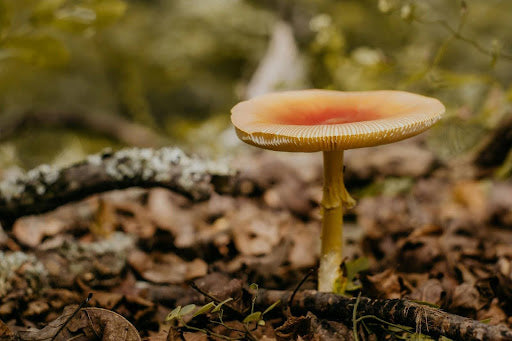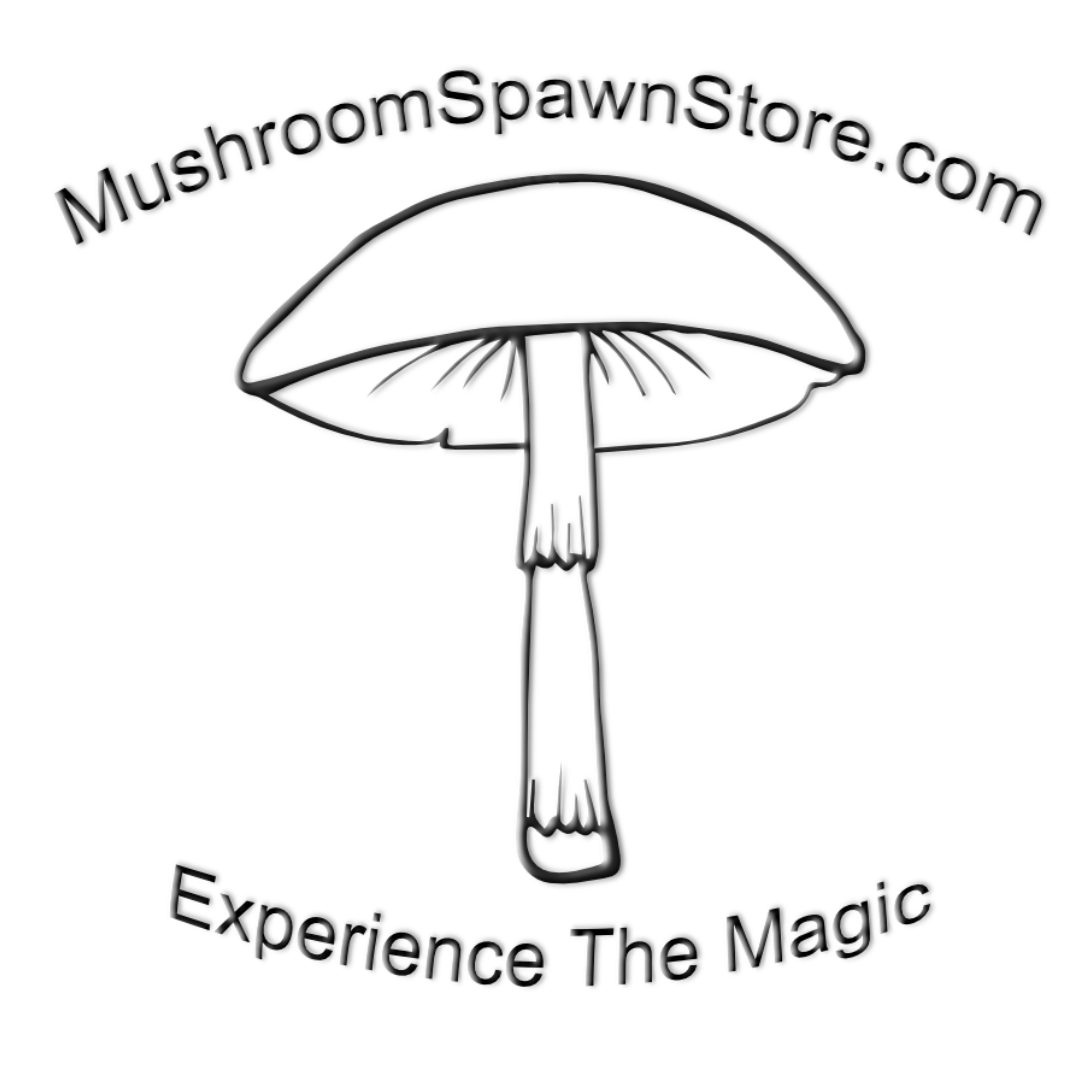Mushroom growing is an incredibly fulfilling hobby with loads of benefits, both for the environment and your health. However, when you’re just getting started and diving deep into the rabbit hole of information, there’s a whole world of unknown mushroom terminology to get the hang of.
For those of you feeling overwhelmed by all the new, unfamiliar lingo, we’ve prepared a full guide explaining all the essentials. Once you know these terms, you’ll pretty much understand any mushroom-growing guide out there without needing to keep dozens of tabs open. Let’s dive in!
The Anatomy Of A Mushroom - Key Terms
First, let’s dive into the main components of the mushroom itself! Do note that the anatomy of a mature mushroom might differ quite a lot depending on the species, but we’ll mention some key components that are often found in mushrooms.

The Fruiting Body
Most common mushrooms will have a fruiting body, aka the main edible part that grows above ground. The fruiting body might contain parts such as:
The Cap
Most mushrooms will have some sort of cap. Mushroom caps are easily recognizable as a curved shape that sits on top of the mushroom stalk (or stem).
Gills and Pores
Mushroom gills and pores are usually found on the underside of the cap, and mostly go unnoticed for most people. These structures help the mushroom produce and disperse fungal spores into the air, helping it reproduce.
Ring
Some mushrooms will also have a ring-like formation around the stem, fanning out like a skirt. Sometimes, the ring can be used to identify mushrooms based on shape, color, or even thickness.
Volva
This is another formation around the mushroom's stem, usually found at the base.

It’s important to remember that mushrooms might have all these parts or almost none of them. Compare a fully-grown Lion’s Mane mushroom to a wood-ear mushroom, and you’ll be amazed by the wide diversity of this fascinating organism.
Top 16 Mushroom-Growing Terms Every Beginner Should Know
General Mushroom Terminology
Fungi
While they may resemble plants, fungi are, in fact, a separate category of living organisms — and quite a unique one at that. This category includes mushrooms, molds, and yeasts and can be found quite literally all around the globe, in the air, soil, and even the sea.
Mycology
Mycology is the scientific study of fungi. The name comes from myco + logy, the Ancient Greek words for mushrooms + study.
Mycelium
When thinking of mushrooms, most people imagine what is called the “fruiting body”, aka the edible part. But mushrooms are so much more than that.
By far the largest proportion of fungal matter in the world is made up of mycelia, root-like structures that can extend for as little as microscopic distances or as far as thousands of acres. If you’ve ever seen growing mold, you might recognize mycelium as the little fuzzy white structures shaping it.
Mushrooms use mycelium to feed themselves by extracting nutrients from the soil.

Culture
Your mushroom culture is a collection of mushroom mycelia of the same mushroom species or strain. Your culture is usually ready to be colonized within the substrate.
Hyphae
A single strand of mushroom mycelium is called a 'hyphae'.
Strain
The mushroom strain is simply the ‘species’ of mushroom you grow.
Spores
Spores are the 'seed' of the mushroom, in other words the genetic material it needs to reproduce. Spores are stored and produced by the gills or pores of your mushroom and dispersed through air, water, and even soil.
Magic Mushrooms
Another term you may come across in your mushroom growing journey is the term 'magic mushrooms'. This term is most commonly associated with a specific mushroom strain also known as Psilocybe cubensis, known for its psychedelic properties. Growing magic mushrooms is forbidden in most parts around the world including the US, and should only be attempted in places where the law allows it.
Terms Related To The Mushroom Growing Process
Cultivation
Cultivation is just another common term for the mushroom-growing process. You can cultivate mushrooms both indoors and outdoors.
Inoculation
The first stage of your mushroom growing process is called inoculation. This involves distributing the mushroom spores on top of your chosen substrate. All you need is the right conditions; your spawn will colonize in roughly 2 to 3 weeks.
Colonization
Colonization is the process of the mushroom mycelium forming and growing in the substrate, without any fruiting bodies existing yet.
Casing
Once mycelium starts showing (after it ‘colonizes’), it’s time for the casing stage.
Casing is usually a layer of clay-loam soil, or a mix of soil and hardwood sawdust, which is placed on top of the substrate after colonization. This layer has no nutritional value and is only there to provide an extra layer for your mushroom fruit to grow on.
Fruiting
After colonization, your mushrooms will enter the fruiting phase, which means that visible mushroom bodies start to appear. The casing stage is there to aid the growth of your impressive harvest.
Yield
The yield of your harvest is simply the quantity of edible fruit your mushroom spawn produces. In other words, the result of the entire mushroom growing process.
Experienced mushroom growers try to experiment with environmental conditions for rapid growth and a high fresh mushroom yield, but when you’re a beginner, simply following the instructions of your mushroom grow bag should be enough for a sizeable harvest.

Terms Related To Mushroom Growing Supplies
Spawn
The spawn simply refers to the living mushroom culture ready to be transferred to a new substrate. Usually, the mycelium is held by a separate carrier - for example, sterilized rye grains, sawdust, or even wooden plugs.
Substrate
The mushroom substrate is simply the ‘soil’ your mushrooms grow in. You can grow mushrooms in a wide variety of substrates, from compost and sawdust to coco coir and even manure. All you need to do is make sure your substrate contains all the nutrients your chosen mushroom strain needs to grow properly.
Terms Related To Mushroom Growing Conditions
Contamination
The biggest barrier to a successful mushroom harvest is the risk of contamination. As other microbes and bacteria find their way into the substrate, they will use up all the nutrients preventing your mushrooms from feeding and growing as they should. This is why it's incredibly important to grow your mushrooms in a fully sterile environment, free of any contaminants.
Learn how to read the signs of contamination in your substrate by reading our beginner's guide to contamination.
Sterilization
In order to keep your substrate free of ANY contaminants, you need to make sure you prepare it accordingly. Sterilization is one way to prepare your substrate, especially popular for grain substrates - you can either do it through:
-
Pressure cooking
-
Chemical sterilization
Pasteurization
Another popular way to prepare your substrate and make sure you remove any nasty contaminants is pasteurization. You can do it either using:
-
Hot water bath
-
Steam
Pasteurization is not as intense as sterilization and won't remove ALL microbes, leaving some beneficial ones behind. It is especially used in straw or wood-based substrates.
Learn All Mycology Basics With Mushroom Spawn Store
As you’re starting out with the amazing hobby of mushroom growing, you’ll encounter a world of mushroom terminology and new information to learn. At Mushroom Spawn Store, we’ll be with you every step of your journey, taking you from novice enthusiast to expert mushroom cultivator!
We provide the best tips for successful mushroom harvests, as well as the right equipment for an easy home-growing experience. Shop the best beginner mushroom grow bags today!




